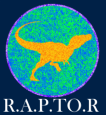Oxide nanoclusters in a consolidated Fe-14Cr-2W-0.3Ti-0.3Y₂O₃ ODS steel and in the alloy powder after mechanical alloying (but before consolidation) are investigated by atom probe tomography (APT). The maximum separation method is a standard method to define and characterise clusters from within APT data, but this work shows that the extent of clustering between the two materials is sufficiently different that the nanoclusters in the mechanically alloyed powder and in the consolidated material cannot be compared directly using the same cluster selection parameters. As the cluster selection parameters influence the size and composition of the clusters significantly, a procedure to optimise the input parameters for the maximum separation method is proposed by sweeping the d(max) and N(min) parameter space. By applying this method of cluster parameter selection combined with a 'matrix correction' to account for trajectory aberrations, differences in the oxide nanoclusters can then be reliably quantified.
Atom probe
,Clustering
,Maximum separation
,ODS



